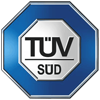Photovoltaic:
It is the abbreviation of Solar Power System. It is a new type of power generation system that uses the photovoltaic effect of solar cell semiconductor materials to directly convert solar radiation energy into electrical energy. It has an independent operation and There are two ways to run on the grid.
At the same time, the classification of solar photovoltaic power generation systems, one is centralized, such as large-scale northwest terrestrial photovoltaic power generation systems; one is distributed (> 6MW as the boundary), such as industrial and commercial enterprise rooftop photovoltaic power generation systems, residential rooftop photovoltaic power generation systems.
Chinese name: photovoltaic Foreign name: photovoltaic
Full name: Solar photovoltaic power generation system Quality: New type power generation system
system introduction
The solar photovoltaic effect, referred to as photovoltaic (PV) for short, is also known as the photovoltaic effect (Photovoltaic), which refers to the phenomenon of a potential difference between parts of a non-uniform semiconductor or a combination of semiconductor and metal when illuminated.
Photovoltaic is defined as the direct conversion of ray energy. In practical applications, it usually refers to the conversion of solar energy to electrical energy, that is, solar photovoltaic. Its implementation is mainly through the use of solar panels made of silicon and other semiconductor materials, using light to generate direct current, such as solar cells everywhere in our daily lives.
Photovoltaic technology has many advantages:
for example, it does not have any mechanical moving parts; it does not need any “fuel” except for sunlight, and it can work under direct sunlight and oblique radiation; and it is also very convenient and flexible from the choice of site, Roofs and open spaces in the city can be used. Since 1958, the solar photovoltaic effect has been applied for the first time in the field of space satellite energy supply in the form of solar cells. Today, from the power supply of the automatic parking meter to the rooftop solar panel, to the large-scale solar power generation center, its application in the field of power generation has spread all over the world.
Solar energy is a fast-growing form of energy, and the solar energy market has also made great strides in the past decade. According to data, based on the average annual installed capacity of the solar system, the global solar market has a compound annual growth rate of 47.4%, from 598MW in 2003 to 2826MW in 2007. It is predicted that by 2012, the average annual installed capacity of solar systems may further increase to 9917MW, and the sales of the entire solar industry may increase from 17.2 billion US dollars in 2007 to 39.5 billion US dollars in 2012. This growth momentum is largely due to the rapidly increasing global market demand, increasing feed-in tariffs and various government incentives.
In some major countries of the world, especially Germany, Italy, Spain, the United States, France, and South Korea, the federal government, state governments, and local government agencies have submitted to the end users of solar products in the form of tax refunds, tax credits and other incentives, Distributors, system integrators and manufacturers provide subsidies and economic incentives to promote the use of solar energy in grid-connected applications and reduce dependence on other energy sources. However, traditional public power companies with huge political lobbying capabilities may also try to change the relevant legislation in their markets, which may also have a relatively adverse impact on the development and commercial application of solar energy.
But generally speaking, due to the unstable political and economic situation in many oil and gas producing areas around the world, many governments are taking active measures to reduce their dependence on foreign energy. Solar energy provides a very attractive power generation solution, and will not form a serious dependence on foreign energy. In addition, increasingly prominent environmental issues and climate change risks associated with fossil fuel power generation have created political incentives that have prompted the government to implement greenhouse gas reduction strategies aimed at reducing carbon dioxide and other gas emissions. Solar energy and other renewable energy can help solve these environmental problems.
Governments around the world have implemented various incentive policies to promote the development and application of solar energy and other renewable energy. Many European countries, some Asian countries, Australia, Canada and several states of the United States and some Latin American countries have issued renewable energy policies. Customer-centric financial incentives include capital cost rebates, compulsory photovoltaic feed-in tariffs and tax credits.

Photovoltaics
Li Hejun’s work “China’s Leading: The Third Industrial Revolution in China” (hereinafter referred to as “China’s Leading One”) [1] is the practice of “The Third Industrial Revolution” in Chinese theory, and creativity provides China’s leading The solution-photovoltaic revolution. It will be able to solve energy bottlenecks and promote economic transformation, which is the fundamental strategy for China’s sustainable development.
“The main energy used by mankind in the future will no longer be coal, oil or natural gas, but solar energy.” Li Hejun believes that “vigorously developing the new energy industry, especially the photovoltaic industry, will be an opportunity for China.”
“A Leading China” outlines the trend of the global new energy revolution, sums up the experience and lessons of Europe, the United States, Japan, South Korea, etc. in this regard, combined with the “Made in China” practice of more than 30 years of reform and opening up and the history of the tortuous development of the Chinese photovoltaic industry And practice, concepts and thinking, economic and social, industrial and enterprise, current and future angles, and comprehensively discussed the strategies, tactics, policies and measures that China should adopt in this round of industrial revolution, thus making a world-leading Judgment.
“China’s Leading One” has topped the list of various books since its publication. According to the November 2013 book list report published by the third-party monitoring agency “Unwinding” of the book industry, “China’s Leading One” has been on the economic book list for two consecutive weeks since its listing in early November 2013. According to the publisher, “China’s Leading One” has been published since November, and within one month it has become the champion of CITIC Publishing’s book sales. According to the “Beijing News” report on December 7, 2013, “China’s Leading One” topped the “Beijing News” “Book Fragrance List” list of economic management books.
The author Li Hejun is called by the media as “enterprise expert, expert entrepreneur”, this book won the honorary president of Peking University National Development Institute, former World Bank chief economist Lin Yifu, famous economist Fan Gang, “The Third Industry “Revolution” author Jeremy Rifkin, former editor-in-chief of “Economic Daily”, founder of the brand China Ai Feng, and editor-in-chief of “Economic Reference News” Du Yuejin, was hailed as the “third industrial revolution” book The best practice of the concept in China.
Components
A photovoltaic panel assembly is a power generation device that generates direct current when exposed to sunlight. It consists of thin solid photovoltaic cells made almost entirely of semiconductor materials (such as silicon). Since there is no active part, it can be operated for a long time without causing any loss. Simple photovoltaic cells can provide energy for watches and calculators, and more complex photovoltaic systems can provide lighting for houses and power the grid. Photovoltaic panel components can be made in different shapes, and the components can be connected to generate more power. Both rooftops and building surfaces will use photovoltaic panel assemblies, and even be used as part of windows, skylights, or shielding devices. These photovoltaic installations are often referred to as photovoltaic systems attached to buildings.
Current situation and prospects
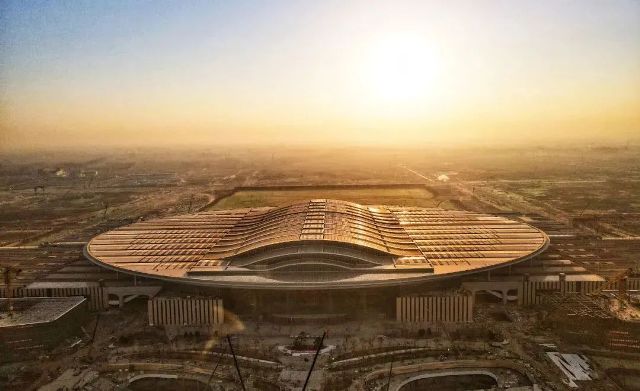
Photovoltaic poverty alleviation
Since 2015, Feidong County, Anhui Province has strived for and invested 8.55 million yuan in the implementation of photovoltaic poverty alleviation, and built a collective (family) distribution for 5 poverty-stricken villages, 225 poor households and 80 “three-none” extremely poor households in the county. 310 photovoltaic power stations. [3]
Solar energy
advantage
① No danger of exhaustion;
②Safe and reliable, no noise, no pollution, absolutely environmentally friendly (no pollution);
③ It is not limited by the distribution of resources, and it has the advantage of being beautiful while installed on the roof of the building;
④On-site power generation and power supply without consuming fuel and setting up transmission lines;
⑤High energy quality (at present, the highest conversion rate in the laboratory has reached more than 47%);
⑥Users are easy to accept emotionally and love very much;
⑦ The construction period is short, and the time it takes to obtain energy is short;
⑧ From the perspective of national security, photovoltaic power generation can realize the supply of the family itself, avoiding the devastation caused by war.
Disadvantages
① The solar energy utilization equipment must have a considerable area.
②The application of solar energy is affected by climate and day and night.
③Technical restrictions result in low energy utilization rate, low efficiency, and high equipment investment.
④The use of solar energy storage batteries will also bring great pollution.
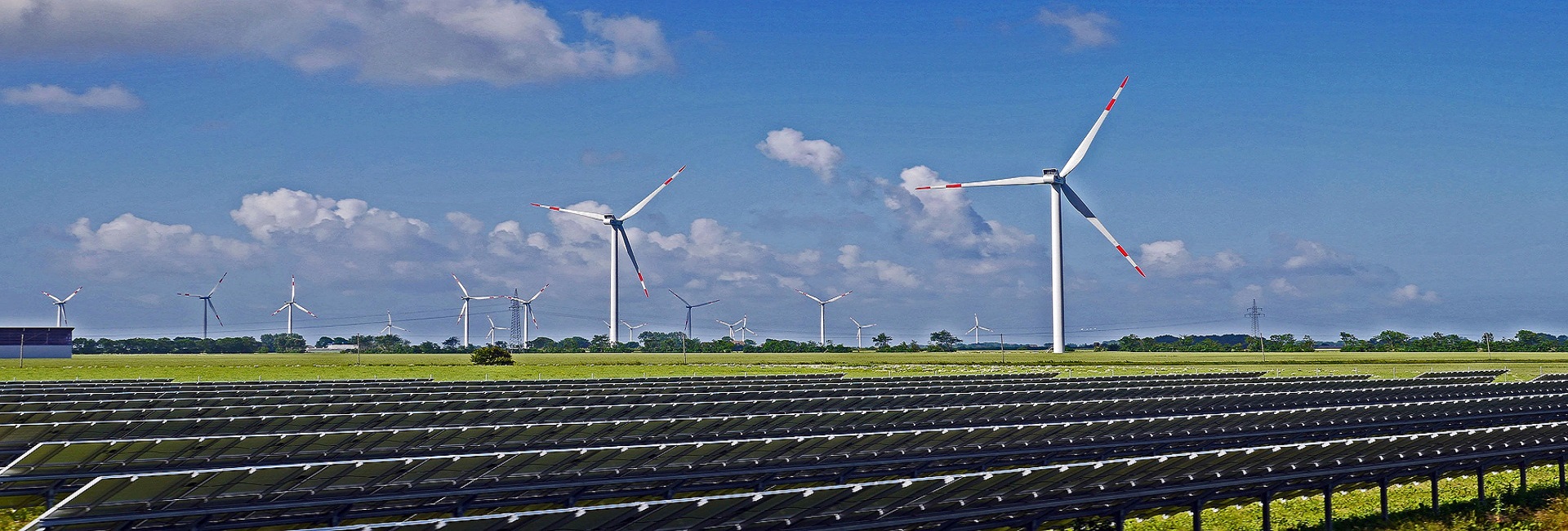
Due to the increasing international demand for solar photovoltaic cells, more and more domestic enterprises have become photovoltaic cell OEM factories, and take this opportunity to continue to grow and develop. The new energy policy of the United States provides a good opportunity for domestic photovoltaic companies to develop. Some domestic industry leaders have begun to establish subsidiaries in the United States to contract photovoltaic power generation projects and actively enter the local photovoltaic power generation market.
In the long run, if China does not widely apply solar photovoltaic power generation technology, the energy problems encountered by China’s economic development will become more and more serious. The energy problems will definitely become a huge obstacle to China’s economic development. China is one of the countries rich in solar energy resources. China has a desert area of 1.08 million square kilometers, mainly distributed in the northwest region with abundant light resources. One square kilometer area can be installed with 100 megawatt photovoltaic arrays, which can generate 150 million kilowatt-hours per year; if 1% of the desert is developed and utilized, it can generate electricity equivalent to the entire year of 2003 in China. In many areas such as northern China and coastal areas, the annual sunshine is more than 2,000 hours, and Hainan has reached more than 2,400 hours, making it a veritable solar resource country. It can be seen that China has the geographical conditions for the widespread application of photovoltaic power generation technology.
The Chinese government has also issued some policies on the development of new energy. Among them, the recently issued “Notice on the Implementation of the Golden Sun Demonstration Project” is the most eye-catching. The notice focuses on supporting user-side grid-connected photovoltaic power generation, independent photovoltaic power generation, large-scale grid-connected photovoltaic power generation and other demonstration projects, as well as the industrialization of key photovoltaic power generation technologies such as silicon material purification and grid-connected operation and related basic capacity building. The degree and market development status determine the unit investment subsidy ceiling for various demonstration projects. For grid-connected photovoltaic power generation projects, in principle, 50% of the total investment of the photovoltaic power generation system and its supporting transmission and distribution projects will be subsidized; among them, independent photovoltaic power generation systems in remote areas without electricity will be subsidized at 70% of the total investment; The key technology industrialization and basic capacity building projects are mainly supported through discounts and subsidies.
This policy promotes China to gradually become a solar photovoltaic power generation powerhouse from a photovoltaic cell foundry. For this historical opportunity, the challenges faced by domestic photovoltaic companies are actually more severe. Only by continuously improving the quality of photovoltaic products and opening up domestic and international sales channels can we make better use of opportunities and make enterprises bigger and stronger.
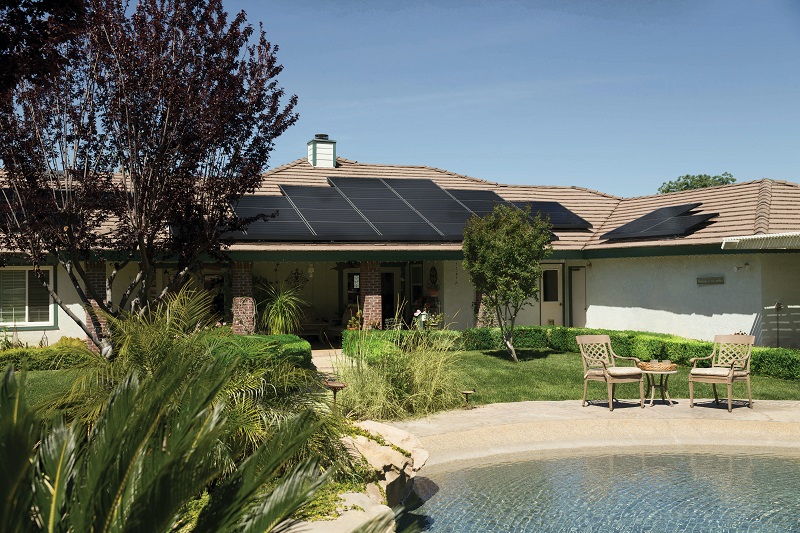
Solar energy has the characteristics of renewable and environmental protection. This advantage has led many countries, including China, to regard solar energy as a key new energy industry. The photovoltaic products in mainland China are mainly supplied to the European and American markets, and the domestic market share is very small. Due to the increased market demand in Europe and the United States, China’s photovoltaic industry has achieved rapid development, with an average annual growth rate of more than 40% in the past five years. In the context of further increased support from policies, the future growth prospects of the photovoltaic industry will be broader.
From upstream to downstream, the photovoltaic power generation industry chain mainly includes industrial chains including polysilicon, silicon wafers, battery slices and battery components. In the industrial chain, from polysilicon to battery components, the technical threshold for production is getting lower and lower, and accordingly, the number of companies is also increasing. Therefore, the profits of the entire photovoltaic industry chain are mainly concentrated in the upstream polysilicon production link, and the profitability of upstream companies is significantly better than downstream.
At present, the profit from the production of polysilicon in mainland China accounts for the highest proportion of the total profit of final battery module products, reaching about 52%; the profit of battery module production accounts for about 18%; About 17% and 13%.
Since 2008, the price of polysilicon has started to drop significantly. Up to now, the spot price of domestic polysilicon has dropped from 500 dollars / kg to 100-150 dollars / kg. The data for 2012 is US $ 18 ~ 30 / kg.
Polysilicon capacity expansion is too fast, and the relatively slow growth in demand is the main factor that causes prices to fall. According to iSuppi’s forecast, in 2009, the global polysilicon supply will double, while the increase in demand is only 34%. Therefore, the price of polysilicon may fall further. iSuppi even stated that by 2010, the spot price of polysilicon will drop to $ 100 / kg, which will greatly reduce the profitability of polysilicon suppliers.
The drop in polysilicon prices will increase the profits of cell producers, but pure silicon wafer business also poses great risks. Whether it is an upstream polysilicon supplier or a downstream cell manufacturer, there are no technical difficulties in manufacturing silicon. When both upstream and downstream enter the silicon wafer business at the same time, the profit of this chain of silicon wafer business is greatly squeezed.
China’s photovoltaic industry has formed a relatively complete industrial chain. In 2009, the output of polysilicon in China exceeded 20,000 tons, and the output of solar cells exceeded 4,000 MW. It has become the world’s largest solar cell country for three consecutive years.
In May 2010, the China Photovoltaic Industry Alliance was established, attracting 22 domestic photovoltaic backbone enterprises, industry associations and research institutions to join. The China Photovoltaic Industry Alliance focuses on guiding industry joint innovation, promoting applications, and standardizing development, researching policies that encourage the development of the photovoltaic industry, and increasing support for corporate technological transformation and industrial upgrading. The China Photovoltaic Industry Alliance will be committed to integrating industrial resources, advancing structural adjustment, and transforming development methods, enhancing industry cohesion, and expanding international influence and competitiveness.
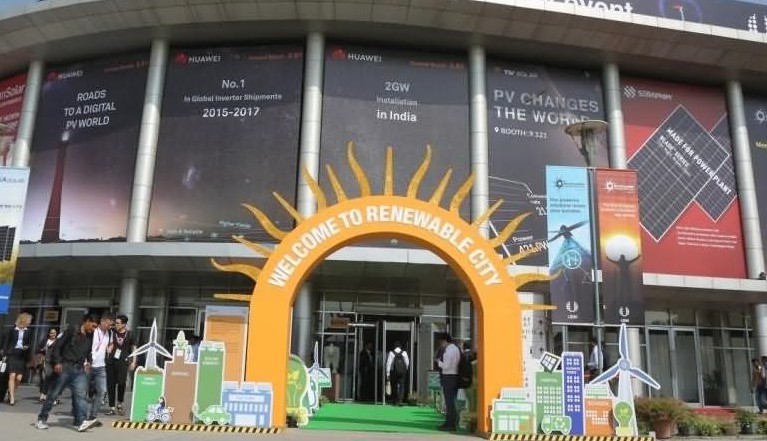
In 2001, Wuxi Suntech successfully established a 10MWp (megawatt) solar cell production line. In September 2002, Suntech ’s first 10MW solar cell production line was officially put into production, with a production capacity equivalent to the total of the previous four years of national solar cell output. The gap in the international photovoltaic industry has shortened by 15 years.
From 2003 to 2005, driven by the European market, especially the German market, Suntech and Baoding Yingli continued to expand production. Many other companies have established solar cell production lines, which has led to the rapid growth of solar cell production in China.
In 2004, Sino-Silicon Hi-Tech, jointly established by Luoyang Monocrystalline Silicon Plant and China Nonferrous Design Institute, independently developed 12 pairs of energy-saving polycrystalline silicon reduction furnaces. Based on this, in 2005, it was the first domestic 300-ton polycrystalline silicon production project. Completed and put into operation, which opened the prelude to the great development of polysilicon in China.
In 2007, China became the country producing the most solar cells, and its output jumped from 400MW in 2006 to 1088MW.
In 2008, China’s solar cell production reached 2600MW.
In 2009, China’s solar cell production reached 4000MW.
In 2006, the world’s annual output of solar cells was 2500MW.
In 2007, the world’s annual output of solar cells was 4,450MW.
In 2008, the world’s annual output of solar cells was 7,900MW.
In 2009, the world’s annual output of solar cells was 10,700MW.
In March 2013, Wuxi City Intermediate People’s Court issued an announcement saying that Wuxi Suntech Solar Power Co., Ltd. could not repay due debts and ruled bankruptcy and reorganization according to law.
In the first three quarters of 2015, the total output value of China’s photovoltaic manufacturing industry has exceeded 200 billion yuan. Among them, polysilicon output is about 105,000 tons, an increase of 20% year-on-year; silicon wafer output is about 6.8 billion pieces, an increase of more than 10% year-on-year; cell output is about 28GW, an increase of more than 10% year-on-year; module output is about 31GW, year-on-year An increase of 26.4%. The profitability of photovoltaic enterprises has been significantly improved, and all links in the industrial chain have increased significantly. In the first three quarters of 2015, China’s photovoltaic products import and export, downstream power station construction, corporate profitability and other fields have been improving. Among them, the export value of major photovoltaic products such as silicon wafers, solar cells and modules reached US $ 10 billion. The newly installed photovoltaic capacity is about 10.5GW, an increase of 177% year-on-year, of which the ground power station is about 6.5GW. [4-5]
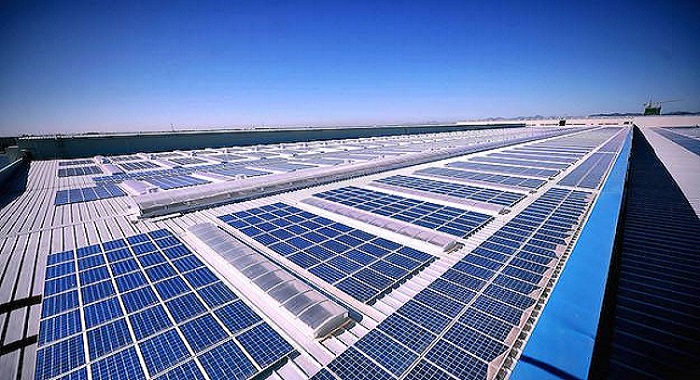
Technical dilemma
At present, the independent research and development strength of China’s photovoltaic companies is generally not strong. The main semiconductor raw materials and equipment are imported. The technical bottleneck has severely restricted the development of China’s photovoltaic industry.
In the entire photovoltaic industry chain, the threshold of packaging technology and capital is the lowest, resulting in the emergence of more than 170 packaging companies in China in a short period of time, with a total packaging capacity of not less than 2 million kilowatts. However, due to skyrocketing raw material prices and excess packaging capacity, these companies basically have little profit and product quality is uneven.
Relatively speaking, solar cell manufacturers such as Wuxi Suntech and Nanjing Zhongdian Photovoltaic, which are at the upstream of the industry chain and have advanced technology, are much better off. Most of them produce first-generation crystalline solar cells with stable performance and are the mainstream products on the market.
However, in the world, solar cell products are transitioning from the first generation to the second generation. The amount of silicon material used in the thin film solar cells of the second generation products is much less, and their cost is already lower than that of crystalline solar cells. In the eyes of experts, thin-film solar cells will compete fiercely with crystalline solar cells in the future.
Kong Li, a researcher of the Institute of Electrical Engineering of the Chinese Academy of Sciences and vice chairman of the China Renewable Energy Society, believes that there is a large gap between China and foreign countries in the follow-up research and development of crystalline solar cells and the development of thin-film solar cells, at least 10 years behind.
The world record holder of photovoltaic technology is basically foreign companies. For example, Kyocera Japan has launched a polycrystalline silicon solar cell with a photoelectric conversion efficiency of 18.5%; Sanyo Japan uses a hybrid solar cell made of crystalline silicon substrates and amorphous silicon thin films with a photoelectric conversion efficiency of 22%; United Solar The company’s flexible amorphous silicon thin-film solar cells with micron-level stainless steel strips as substrates have the advantages of light weight and flexibility compared with other companies’ glass hard substrate solar cells.
The world’s photovoltaic technology continues to make breakthroughs, and industry costs continue to decline. The “2007 China Photovoltaic Development Report” stated that with the continuous progress of technology and the continuous expansion of industrial scale, the cost of photovoltaic power generation is expected to compete with conventional power after 2030 and become a mainstream form of energy utilization.
At the 2007 World Solar Congress and Exhibition held in Beijing in September, Vice President of the International Solar Energy Society and consultant of Japan Kyocera Corporation Yukawa Yui introduced that Japan plans to reduce the cost of photovoltaic power generation to equivalent in 2010, 2020 and 2030 At the level of 1.5 yuan, 0.93 yuan and 0.47 yuan per kWh. According to the International Energy Agency’s forecast, the world’s photovoltaic power generation will account for 2% of total power generation in 2020, and 20% -28% in 2040.
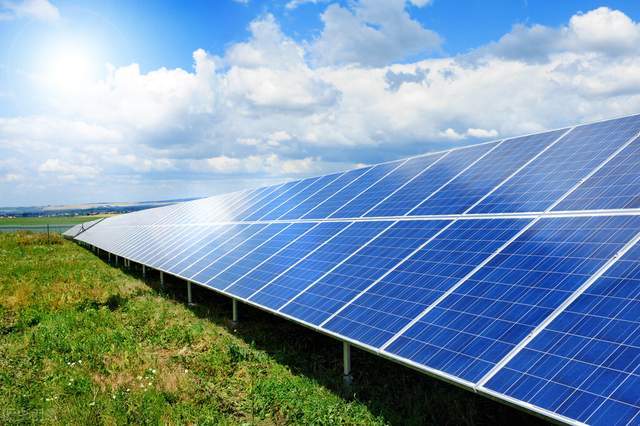
Policy Support
The development of China’s photovoltaic industry is in a rising period. If it can break through the bottlenecks in policy and technology, it will inevitably have an unlimited future. Cui Rongqiang, director of the Institute of Solar Energy and doctoral supervisor at Shanghai Jiaotong University, believes that the current state should strengthen policy guidance to promote the industry to shorten the gap with the international advanced level.
First, formulate a mid- to long-term plan with the goal of “cultivating the photovoltaic application market and promoting the development of the photovoltaic industry”, and legally specify and refine the proportion of renewable electricity purchases and key uses.
Second, encourage civilians to surf the Internet. Drawing on foreign experience, gradually launching and implementing the real “photovoltaic roof plan” to establish the status of photovoltaic power generation in the national power energy structure.
Third, establish special support funds and implement fee reduction and exemption policies in financial and taxation. For example, at present, special funds are drawn from domestic electricity tariffs to the photovoltaic industry; for the development of photovoltaic power in poor areas, part of the government subsidies, part of the enterprise support, and support at cost prices, etc.
Fourth, learn from the experience of ordinary buildings in developed countries must have experience in photovoltaic products, and implement rigid policies for solar energy in public facilities and government buildings in developed areas.
Fifth, support the upstream high-purity silicon raw material industry, reduce the cost of photovoltaic cells, and then accelerate the cost reduction and application promotion of photovoltaic grid-connected power plants.
Talent shortage
Of the more than 1,200 higher vocational colleges across the country, no more than 30 have established photovoltaic power generation technology application majors. Professor Dai Yuwei, chairman of the New Energy Sub-Education Committee of the Higher Vocational College of the Ministry of Education, said that because there is a lack of specialized high-skilled personnel in China, it is generally necessary to recruit graduates of electronics, chemical engineering and other specialties, and train them as needed. Most of the photovoltaic industry needs complex skilled talents, and the huge gap urgently needs to be filled by vocational graduates.
A person in charge of a well-known solar energy company also said: The photovoltaic industry is booming, and the application fields of solar energy are becoming wider and wider, but there are too few professional counterparts, and the annual gap is about 200,000.
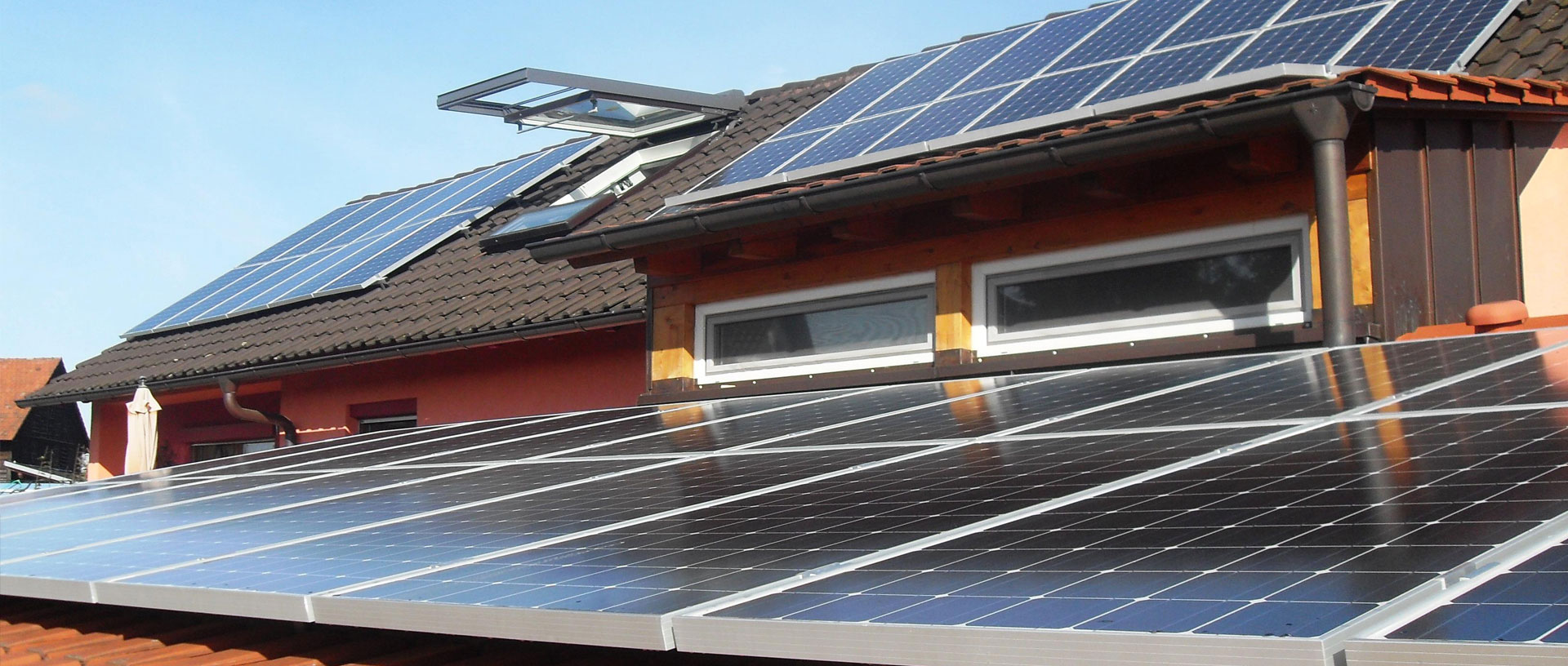
overseas market
At the end of 2007, the total market value of Chinese photovoltaic companies listed in the United States reached the highest point, about 32 billion U.S. dollars. Today, the number of listings has increased to 11, but the total market value is only 2 billion US dollars, which has fallen by more than 90% from the peak. In the past year and a half, the price demand elasticity theory of photovoltaic products has completely failed, prices have fallen sharply, but demand has been tight. Xu Min believes that the main reason is the tight credit policy of banks. As the world’s largest photovoltaic market, Europe is experiencing a severe debt crisis, credit conditions are tight, and the photovoltaic market is in poor condition.
In addition, the Jefferies Group estimates that due to the US dual-anti-policy policy affecting Chinese exports, only the first quarter of this year, the loss of Chinese photovoltaic companies due to dual-anti-reaction reached 120 million US dollars, which is equivalent to Chinese companies needing to sell 2.4GW more modules in order to Recover damages.
At present, the photovoltaic industry has ceased production and went bankrupt, etc., and it is very difficult for enterprises to obtain funds from the market. Xu Min said that about 10 photovoltaic companies have tried to go public but have not succeeded.
According to the China Semiconductor Industry Association website, Xu Min said that the decline in the price of photovoltaic products has caused huge asset impairments for photovoltaic companies. Among the nine photovoltaic companies counted by Jefferies, the asset impairment losses in the second half of last year were as high as US $ 3.9 billion. .
The Federal Energy Regulatory Commission (FERC) recently announced the addition of utility-grade power generation in October, while there are only five photovoltaic projects, totaling 31 MW, less than 20% of the average monthly 180 MW in 2014.
It should be noted that FERC only counts utility-grade solar energy, so these data do not include those growing “after-meter” areas, including rooftop solar photovoltaic systems for homes, businesses, and schools.
Despite the slow progress of utility-level photovoltaic projects at this stage, the nationwide photovoltaic market is expected to increase to 6.5 GW in 2014, an increase of 36% from 2013, making solar energy exceed natural gas as the largest source of new power generation.
Top 10 foreign listed Chinese photovoltaic companies
Top 10 companies with the highest market capitalization in China’s photovoltaic industry overseas (data as of August 13, 2012)
TOP 1: GCL-Poly Market value: 18.3 billion (HKD) = 2.359 billion (USD)
TOP 2: Trina Solar Market Value: 389 million (USD)
TOP 3: Yingli Green Energy Market Value: 279 million (USD)
TOP 4: Jingao Solar Market Value: 204 million (USD)
TOP 5: Suntech Power Market value: 197 million (USD)
TOP 6: Saiwei LDK market value: 192 million (USD)
TOP 7: Yuhui Sunshine Market value: 135 million (USD)
TOP 8: Artus Solar Market Value: 127 million (USD)
TOP 9: Hanwha New Energy Market Value: 97.130 million (USD)
TOP 10: JinkoSolar’s market value: 57.9092 million (USD) …
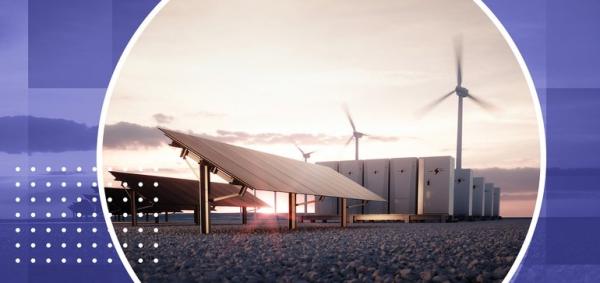
dispute
July 2012
The Ministry of Commerce of China confirmed that it initiated a “dual-reverse” case against the United States in the field of polysilicon and an anti-dumping investigation against South Korea.
November 2012
The Ministry of Commerce of China has decided to conduct anti-subsidy investigations and anti-dumping investigations on imported solar-grade polysilicon originating in the European Union, and will conduct a combined investigation with the “double anti” investigations of polysilicon products initiated by the United States and South Korea.
Affected by the European debt crisis and multi-country trade protection, Chinese photovoltaic companies have suffered large losses. Among them, Savi has lost more than US $ 400 million in the first half of 2012, and Suntech Power has lost US $ 180 million in Q2 in 2012.
The European Commission announced on the 4th that the European Union will impose a temporary anti-dumping tax on photovoltaic products produced in China from June 6. The tax rate for the first two months will be 11.8% and thereafter it will rise to 47.6%.
The European Commission said in a statement that, considering that it would ensure a stable supply of photovoltaic products in the short term, the committee decided to implement temporary tariffs in two steps. Starting from June 6, the EU will implement a temporary tax rate of 11.8%. After August 6, the tax rate will rise to 47.6%, during which the average tax rate is 37.2% to 67.9%.
EU Trade Commissioner De Gucht said at the press conference that the temporary tax rate will be maintained for 6 months until December, after which the European Commission will decide whether to impose a permanent tariff on photovoltaic products made in China. Once the tariff is imposed, the tariff will continue 5 years.
However, on the same day, the European Union’s Affordable Photovoltaic Union (AFASE) sent an open letter to De Gucht calling for its ruling to stop taxation. The letter stated that the European Commission ’s actions would make solar energy cost more than coal or nuclear energy, which would make clean solar energy no substitute for dirty energy. The letter emphasized: “Climate change is the biggest challenge of our generation, and affordable solar energy is a powerful weapon to meet this challenge.”
At the request of the European Union Support Solar Energy Organization (EU ProSun), the European Commission launched anti-dumping and anti-subsidy investigations on solar cells originating in China in September and November 2012.
De Gucht said that the European Commission believes that the dumping rate of Chinese photovoltaic companies to the EU market is as high as 112.6%, and the degree of damage to EU photovoltaic products is about 67.9%. The European Commission also believes that Chinese products have caused a considerable number of EU photovoltaic companies to go bankrupt and affected about 25,000 job opportunities in the EU.
The European Commission has proposed to EU member states to impose a temporary anti-dumping duty of 47.6% on Chinese photovoltaic products. According to sources, the proposal was opposed by 18 member states.
Rong Sili, director of China ’s Trina Solar ’s European public affairs department, said that the temporary anti-dumping tariffs imposed by the EU, whether 11.7% or 47.6%, will have a very bad impact on related companies in China and Europe. She said: “Our German customers have estimated that if the EU tax rate is set at about 15%, then 85% of their business may be lost.”
De Gucht also said: “The European Commission will always be ready to start discussions with China’s photovoltaic product exporters and relevant chambers of commerce. If both parties can find a proper solution, temporary tariffs will stop being collected.”
In this regard, Rong Sili said: “Of course, our company welcomes such talks, but this requires the sincerity of both parties.” [6-8]
On June 4, 2013, the European Commission announced that the EU will impose a temporary anti-dumping duty of 11.8% on solar panels and key devices produced in China from June 6. If China and Europe fail to reach a settlement before August 6, the anti-dumping tax rate will rise to 47.6%.
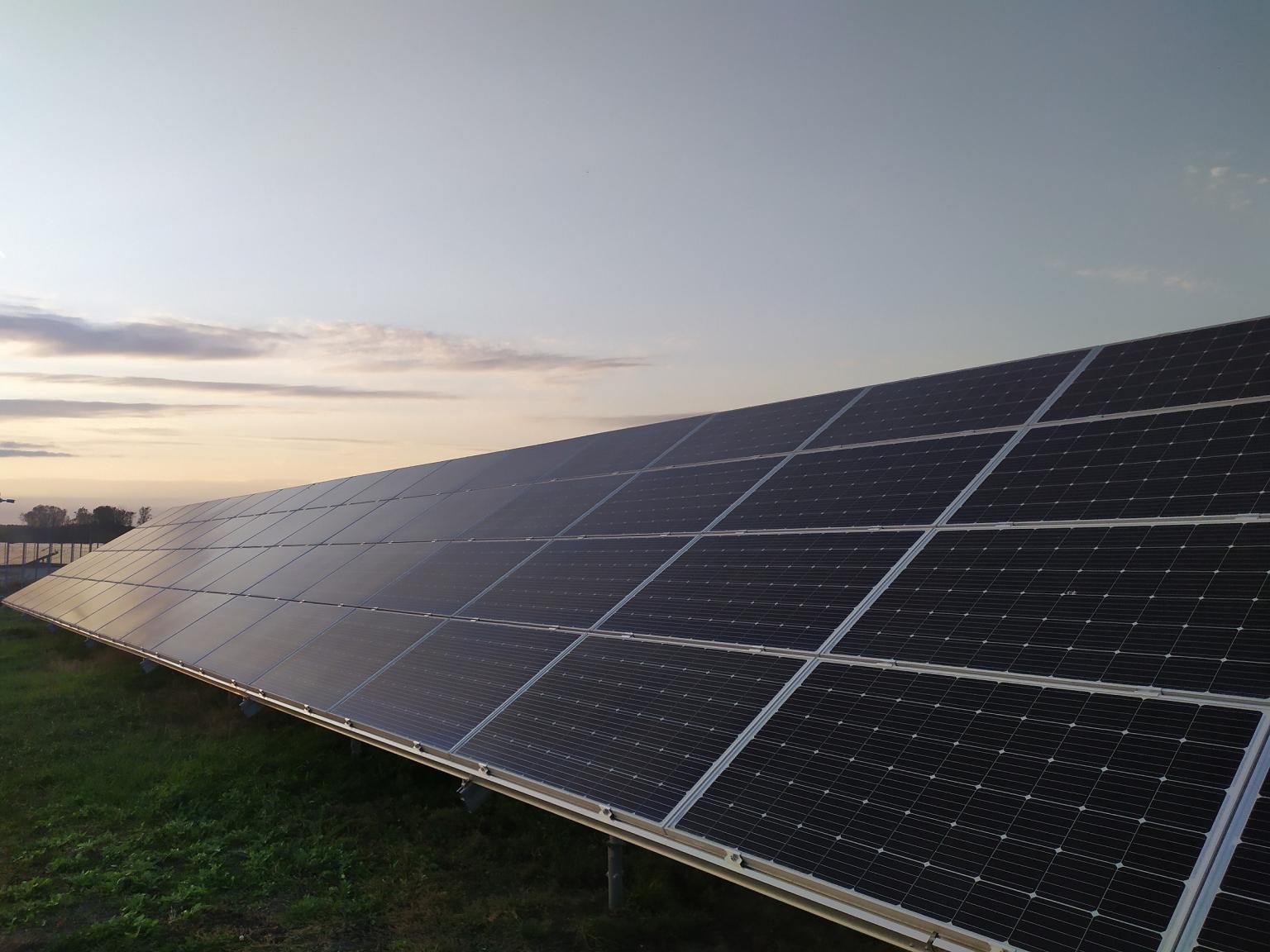
Wuxi Suntech: Chairman Shi Zhengrong
Jiangxi Saiwei: Chairman Peng Xiaofeng
Yingli Group: Chairman Miao Liansheng
Jingao Group: Chairman Jin Baofang
Artus: Chairman Qu Xiaohua
Trina Solar: Chairman Gao Jifan
Hanwha New Energy: Chairman Nan Shengyou
Yuhui Sunshine: Chairman Li Xianshou
JinkoSolar: Chairman Li Xiande
Nanjing CLP: Chairman Lu Tingxiu
How should Chinese photovoltaic enterprises respond to the “double anti”
Regarding how Chinese photovoltaic companies should deal with the “dual-reverse” of the United States, many people in the industry have put forward the strategy of “bypassing the sea”. In fact, the overseas expansion strategy should become a long-term strategy for Chinese photovoltaic companies. Whether or not there is a “double anti”, it should be carried out in a planned manner; moreover, the central government should also give enough support so that it can also give the country enough A good export of foreign exchange reserves. This has already been said before. However, as an entrepreneur, it should be noted that setting up a factory overseas is a complex and long-term affair, which requires careful research and careful decision-making. If it is just because of the “double opposition”, the decision is made in a hurry, and it may actually be wrong. Moreover, there is a strategy to deal with the increase in costs caused by setting up factories overseas.
However, it is more important for Chinese photovoltaic companies to take advantage of the current downturn in the photovoltaic industry, strengthen their strength as soon as possible, enhance their ability to resist risks, and improve technology and manufacturing levels, which is the real response. Here are three suggestions:
We should boldly adopt China’s independent innovation technology
Although China is a large photovoltaic manufacturing country, it is not a strong photovoltaic manufacturing country. Taking the current polysilicon as an example, the foreign sales price to China has been reduced to 150,000 yuan / ton, and there are still profits, but almost all Chinese companies can only stop production. This is the result of reliance on foreign technology. However, China’s manufacturing experience over the years has actually accumulated a wealth of innovation. In fact, many companies have developed many “low-cost, high-efficiency” photovoltaic manufacturing technologies. For example, the PM method polysilicon purification technology developed by Shanghai Provo can reduce the cost to 60,000 yuan / ton under the purity of 99.99995%, which is only 1 / 2.5 of the cost of the Siemens method polysilicon abroad. The seedless crystal casting single crystal technology being developed by Shanghai Pro is not only high in efficiency but also low in cost, and it is already in an international leading position. The four-ingot polycrystalline silicon ingot furnace in Shanghai Provo has a single furnace output of 3,200 kg. The energy consumption per ingot is less than 5 kWh / kg. The grain quality is better than that of European and American ingot equipment. This shows that China’s equipment manufacturing and process research and development capabilities are already at the international advanced level. In the low point of the current crisis stage, as long as Chinese photovoltaic companies boldly use these innovative technologies for independent innovation, boldly adopt their own domestic technological achievements, and independently develop more efficient and energy-saving photovoltaic products, they can further significantly reduce photovoltaic manufacturing costs. In April 2013, Wuhan Aowei Energy’s “High Efficiency Roof Concentrating Power Generation System” project won a special gold award at the 41st Geneva International Invention Exhibition and was one of the three special gold awards won by the Chinese delegation.
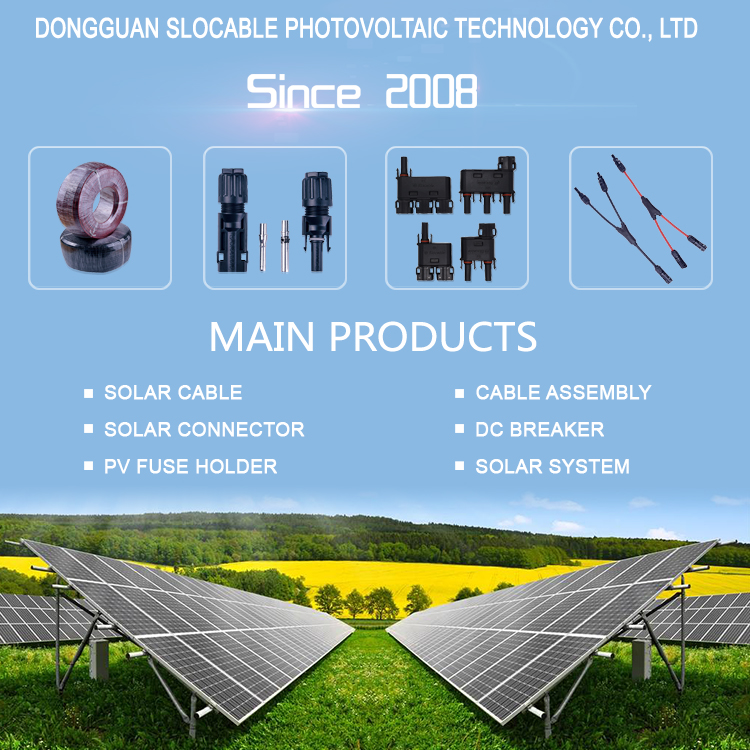



 2020-05-09
2020-05-09

























